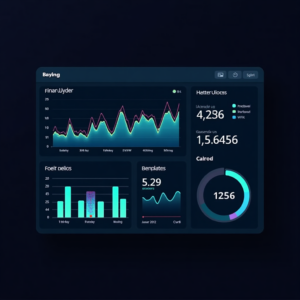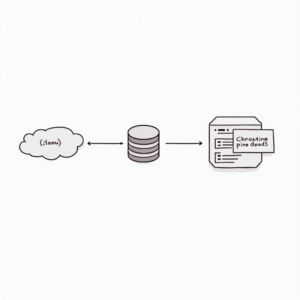
Introduction to Dynamic Dashboards
Dynamic dashboards are interactive and customizable interfaces that provide real-time data visualization and analytics. They are essential tools for businesses, organizations, and individuals to monitor and track performance, identify trends, and make data-driven decisions. In this article, we will explore how to create dynamic dashboards using CodeIgniter, a popular PHP framework.
CodeIgniter is a powerful and flexible framework that allows developers to build robust and scalable web applications quickly. Its modular design and extensive libraries make it an ideal choice for creating dynamic dashboards. With CodeIgniter, developers can easily integrate various data sources, create interactive charts and graphs, and design custom layouts.
Setting Up the Environment
To get started with creating dynamic dashboards using CodeIgniter, you need to set up the environment. First, download and install CodeIgniter from the official website. Then, create a new project and configure the database settings. You can use a relational database management system like MySQL or a NoSQL database like MongoDB.
Next, install the required libraries and plugins, such as the CodeIgniter database library and the Chart.js library for data visualization. You can use Composer, a popular PHP package manager, to install the dependencies. Additionally, you can use a code editor like PHPStorm or Sublime Text to write and debug your code.

Creating the Dashboard Controller
The dashboard controller is the core of the dynamic dashboard application. It handles requests, interacts with the database, and renders the dashboard view. To create the dashboard controller, extend the CodeIgniter Controller class and define the necessary methods.
For example, you can create a method to retrieve data from the database and another method to render the dashboard view. You can use the CodeIgniter query builder to simplify database interactions and the view helper to render the dashboard template.
Here is an example of a dashboard controller:
<?php
defined('BASEPATH') OR exit('No direct script access allowed');
class Dashboard extends CI_Controller {
public function __construct() {
parent::__construct();
}
public function index() {
$data['charts'] = $this->get_charts();
$this->load->view('dashboard', $data);
}
private function get_charts() {
$this->db->select('*');
$this->db->from('charts');
$query = $this->db->get();
return $query->result();
}
}
?>
Designing the Dashboard View
The dashboard view is the user interface that displays the data and provides interactive features. To design the dashboard view, create a new PHP file in the views directory and use HTML, CSS, and JavaScript to create the layout and functionality.
You can use a front-end framework like Bootstrap or Materialize to create a responsive and customizable layout. Additionally, you can use a JavaScript library like Chart.js or D3.js to create interactive charts and graphs.
Here is an example of a dashboard view:
<div class="container">
<h1>Dynamic Dashboard</h1>
<div class="row">
<div class="col-md-6">
<canvas id="chart1"></canvas>
</div>
<div class="col-md-6">
<canvas id="chart2"></canvas>
</div>
</div>
</div>
<script>
var ctx1 = document.getElementById('chart1').getContext('2d');
var ctx2 = document.getElementById('chart2').getContext('2d');
var chart1 = new Chart(ctx1, {
type: 'bar',
data: {
labels: ['Jan', 'Feb', 'Mar'],
datasets: [{
label: 'Series 1',
data: [10, 20, 30]
}]
}
});
var chart2 = new Chart(ctx2, {
type: 'line',
data: {
labels: ['Jan', 'Feb', 'Mar'],
datasets: [{
label: 'Series 2',
data: [40, 50, 60]
}]
}
});
</script>
Integrating Data Sources
To create a dynamic dashboard, you need to integrate various data sources, such as databases, APIs, or files. CodeIgniter provides a flexible and modular design that allows you to easily integrate different data sources.
For example, you can use the CodeIgniter database library to interact with a MySQL database or use a third-party library to interact with a MongoDB database. Additionally, you can use the Curl library to make API requests and retrieve data from external sources.
Here is an example of integrating a MySQL database:
<?php
$this->db->select('*');
$this->db->from('tables');
$query = $this->db->get();
$data = $query->result();
?>
Deploying the Dashboard
Once you have created and tested the dynamic dashboard, you need to deploy it to a production environment. CodeIgniter provides a flexible and scalable design that allows you to easily deploy the application to various environments.
You can use a cloud platform like AWS or Google Cloud to deploy the application, or use a virtual private server (VPS) or a shared hosting service. Additionally, you can use a containerization platform like Docker to simplify the deployment process.
Here are the general steps to deploy the dashboard:
- Configure the production environment
- Upload the application files to the production environment
- Configure the database settings
- Test the application
Conclusion
Creating dynamic dashboards using CodeIgniter is a straightforward process that requires a good understanding of the framework and its libraries. By following the steps outlined in this article, you can create a robust and scalable dynamic dashboard that provides real-time data visualization and analytics.
CodeIgniter provides a flexible and modular design that allows you to easily integrate various data sources, create interactive charts and graphs, and design custom layouts. With CodeIgniter, you can create dynamic dashboards that meet the specific needs of your business or organization.